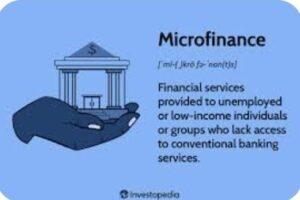To individuals who are marginalized in rural, semi-urban, or metropolitan settings, micro-finance refers to the provision of thrift credit and other financial services and products of extremely small quantities.

Microfinance aims to give persons from the disadvantaged group the means to increase their income levels and thus improve their standard of living. In general, microfinance aids in the reduction of poverty, provides funding for microentrepreneurs, and promotes gender equality. Micro-credit products are typically those with loanable sums between Rs 25,000 and Rs 40,000 that can be repaid over time.
Micro-credit and micro-finance are frequently used interchangeably. While the phrase “micro-finance” refers to additional financial services like saving, insurance, and investing, among others, while “micro-credit” refers to small-scale loans. In credit assessment, monitoring, and recovery, a group is known to have a significant role.
Typically, there are two types of groups:
Self-Help Groups (SHGs): In this situation, the group acts as a formal institution’s financial intermediary. In India, this is the most common model used.
Grameen Groups: In this situation, a formal institution gives financial support to a group member based on the group’s assurance. A few microfinance organizations in the nation are using this model. The Indian government’s parent organization, NABARD, is credited with establishing microfinance in the country. About 68% of India’s population lives in rural areas and more than 50% of them depend on agriculture for their livelihood. This gives NABARD and other related organizations a substantial space to conduct microfinancing operations. A growing number of Indian society’s segments are receiving loans from all microfinance organizations. The Micro-Units Development and Refinance Agency Ltd. (MUDRA) was established by the Indian government. This institution offers finance to micro and small businesses with income-generating activities outside of the corporate and agricultural sectors and loan needs under Rs 10 lakh.









